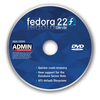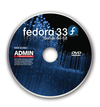« Previous 1 2 3 Next »
Server administration with Cockpit
Fly by Sight
Cockpit [1] offers a graphical user interface for managing servers that takes care of network configuration, displays the server load, starts and stops system services, manages users, and more. All of these tasks can be handled conveniently in a web browser. Cockpit's feature scope is ideally suited to managing individual servers or server farms in corporate environments.
Unlike comparable products such as Webmin [2], which accesses the basic system through Perl scripts, Cockpit works exclusively and directly with systemd, as can be seen in the software versioning: The current version is 217. A glance at the blog [3] reveals that new versions of Cockpit are released approximately every two weeks.
In an article from 2015 [4], ADMIN looked into the topic of managing Linux servers with Cockpit; since then, much has changed. The Red Hat-sponsored project is now available for Fedora, Red Hat Enterprise Linux (RHEL), CentOS, Debian (version 9 and above), and Ubuntu (17.04 and above) and runs on x86_64 architectures, as well as 32-bit ARMv7 and 64-bit ARMv8 (AArch64). The server images of CentOS and Fedora come with Cockpit preinstalled.
Quickstart
On CentOS and Fedora, you can install Cockpit and enable and launch the matching systemd socket with:
dnf install cockpit systemctl enable cockpit.socket systemctl start cockpit.socket
These commands wake up a web server, which you can access with the Cockpit computer's IP address on local network port 9090 by entering https://192.168.2.3:9090 in a browser. Cockpit automatically generates a certificate for encrypted HTTPS connections.
To let all the admins on the network access the
...Buy this article as PDF
(incl. VAT)
Buy ADMIN Magazine
Subscribe to our ADMIN Newsletters
Subscribe to our Linux Newsletters
Find Linux and Open Source Jobs
Most Popular
Support Our Work
ADMIN content is made possible with support from readers like you. Please consider contributing when you've found an article to be beneficial.






